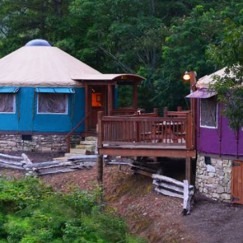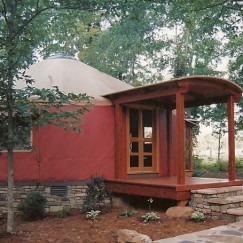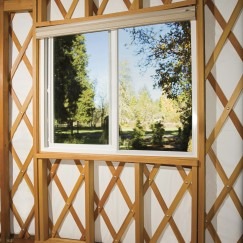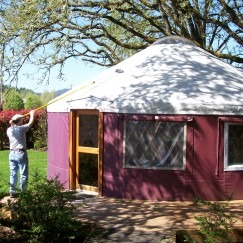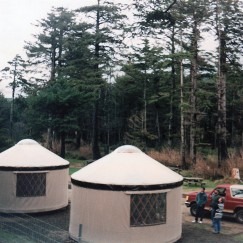The Benefits of Living in Round Spaces
There’s something calming about living in round spaces. Surrounded by curved walls that inspire creativity, the flow is graceful from one area to another. That feeling isn’t new. People have embraced living in round homes for thousands of years.
The Alaskan Inuit still occasionally construct domed igloos, which rely on heavily compacted blocks of snow to create a solid, insulated structure without mortar or supports. Half of Mongolia’s modern population live in yurts, known there as “gers.” Their traditional cylindrical home uses water-resistant wool felt or animal skin to cover a wooden lattice frame, and as temperatures drop on the steppe, residents add more layers for warmth.
You can find round homes like igloos, yurts and tipis worldwide. While a lot of houses today have adapted sharp corners and angular walls, living in round spaces instead of traditional homes offers a unique range of benefits.
1. Energy Efficiency
With the right features, environmentally conscious yurt owners can save money on monthly bills while protecting the environment. A single solar panel can produce enough power to run 84 light bulbs for 1 hour a day, depending on the location and solar exposure. Installing a composting toilet can also reduce water use by 20-50 percent.
Windows and door placement can additionally maximize solar heat and light reaching your yurt. Insulation liners can keep your yurt warmer in the winter and cooler in the summer by reflecting up to 97 percent of radiant heat around your yurt. Choosing Low-E insulated glass windows helps minimize heat loss, and placing windows opposite to each other provides gross-ventilation to keep your space cool. Plus residents can open the skylight to cool off during hot summers.
On average, round buildings use 15 percent to 20 percent less materials per square foot compared to rectangular designs as well. We craft our yurts using sustainable handpicked second growth lumber and recycle our wood scrap to reduce environmental impact.
2. Inspirati on from Nature
on from Nature
Round spaces make many feel grounded—and with good reason. People build structures to reflect what they see. Nature reflects that inspiration through the natural circular shapes found in the wilderness. Some even say being in a yurt home, for instance, feels like returning to the comfort of the womb.
Round spaces offer a one-of-a-kind perspective. The curves of the building protect and cradle you, while still keeping you connected to the outside environment. Those in yurts can rest in comfort as they listen to the tapping of rain on the roof or the whistling wind through the trees. When people gather together in a round home, the shape also encourages everyone to speak with equal power. There’s no front of the room where higher status people can stand. Plus, acoustics for making conversations and playing music are incredible, and center community even more.
3. Strength
Earthquakes, hurricanes and gale-force winds can ravage a house. However, the way the wind flows around round homes can help them withstand a wide array of natural disasters. The many interconnected points in circular structures provides a high level of stability and flexibility. In fact, architect Eli Attia once claimed his “Roundhouse” technology could guard buildings as high as 100 stories from earthquakes.
“The superior aerodynamic behavior of the Roundhouse reduces the wind pressure load acting on the building to its minimum — less than half (!) that of a square building and much less than irregular building forms,” he wrote on the Huffington Post, “making the [Roundhouse technology’s] round form the most effective, least expensive to withstand high winds.”
Do the perks of living in round spaces sound good to you? Consider trying a yurt. Pacific Yurts has been the industry leader since 1978 and can help direct you toward the right yurt for you.
